How Video, Voice, and Vernacular are reshaping today’s marketing landscape  Â
The recent years, especially the pandemic period, have seen an accelerated transition to digital by brands and businesses. And three powerful elements have emerged as significant drivers of this transformation – video, voice, and vernacular. Together, they are reshaping the marketing landscape and revolutionising the way brands communicate with their audiences.
In this feature report, Adgully examines how video, voice, and vernacular are powering brands’ marketing strategies.
Video Marketing: A Dominant Force
Video marketing has witnessed a meteoric rise with the proliferation of online video platforms and the widespread accessibility of high-speed Internet. Brands are leveraging the power of video content to captivate and engage their target audience. In advertising, storytelling, or product demonstrations, video has become an indispensable tool for capturing attention and delivering impactful messages.
Mihika Sarangi, Creative Manager, The Rabbit Hole (Zoo Media), observed, “In today’s world, video marketing is the most efficient form of advertising that connects to the customers and audience by providing the value, relevance, and adaptability they demand while also supporting their desire for an always-on lifestyle. Since the lockdown, the rise of video consumption and hence, video marketing has been inexorable. More and more marketers have realised the power of this digital tool to help them tell their brand story in captivating ways that no other medium allows.”
Sarangi further said, “It is no longer a contention point that videos increase the chances of sales across platforms exponentially. Thanks to the widespread use of smartphones and devices, internet users may now access content anytime, anywhere. Even small-scale firms may now advertise their goods and services thanks to improvements in the technology and tools used to create video content. According to a report by Hubspot, 70% of the marketers who don’t currently use video as a marketing tool, told us they plan to start in 2023.”
While stating that videos are a lifestyle normality these days, Amrita Sharma, Co-Founder & Director, Mixed Route Juice, noted that videos are the fastest form of entertainment in today’s times. According to her, shorter attention spans, availability of multimedia content, access to multiple modes of content dissemination – all push consumers to get information faster and in a manner that gets registered effectively.
Pranav Agarwal, Co-founder, SW Studios, too, stated that videos have become the focal point of the media mix for all marketing channels. He said, “Short video content has seen an exponential rise in acceptance with the changing consumer usage behavior patterns. Brands and agencies used to have the mentality that videos were a cost-intensive proposition and were kept primarily for big-ticket campaigns but now, even for hygiene and BAU operation, videos are the mainstay. Videos with low production value can garner massive traction, especially with the short video content boom that we have witnessed in the past few years.”
“An image is an image, but a video is a set of in-motion images used to define and elaborate an emotion that a normal image would fail to generate,” explained Manini Contractor, Strategic Director, Excellent Publicity, adding “Imagine we said ‘wafers’, but we already know what your head is processing the word into – It is Lay’s, this is because their video advertisements were so immersive that they impacted the audience affirmatively! Also, with new technologies, accessibility to generate high-quality content has become easy, which is one of the crucial components to build a great marketing strategy – the one that enables brands to connect with their audience effectively.”
“With this, we can say that video marketing has its dominance spread across a huge landscape – considering popular apps like YouTube, social media, and TikTok, which are set as the base to connect easily and effectively with the target audience. In conclusion, videos are transforming the marketing landscape by enhancing engagement, increasing reach, enabling effective storytelling, improving conversion rates, and being easily accessible on mobile devices,” Contractor added.
According to Jitendra Hirawat, Director - SoCheers Films, SoCheers "Video marketing has become an essential approach in the world of digital marketing. If you see, people are constantly consuming content, whether it's any informational data or an inspiring brand story. Videos have become the go-to format for consuming content. Platforms like Youtube Shorts and Instagram Reels have become breeding grounds for video content, where businesses of all sizes have the opportunity to showcase their products, share valuable insights, and connect with their audience."
"From a marketing perspective, videos are a game-changer. They allow brands to tell compelling stories, evoke emotions, and build strong connections - all in a matter of a few seconds. And people don't just buy products or services anymore, they buy into the stories and values behind them. And, in order to stand out in a competitive industry, businesses must put on their creative hats on and craft ingenious ideas to embrace the magic of videos, for they hold the key to unlocking unparalleled success in this rapidly evolving world of digital marvels." He added.
The Rise of Voice Technology
Alongside Video, Voice Technology has emerged as a game-changer in the marketing landscape as well. Voice assistants like Siri, Alexa, and Google Assistant have become ubiquitous, transforming the way people search for information, interact with devices, and make purchase decisions. Voice search optimisation and voice-enabled experiences have become imperative for marketers to ensure they are present and relevant in this voice-driven era.
Mihika Sarangi believes that ‘voice play’ could make marketing time and cost-efficient for brands – negating the need for the creation of visually appealing content could reduce production timelines massively and production budgets. She added, “For consumers, it unifies the experience with voice-activated queries that make things faster and hassle-free. An experience that otherwise, involves typing, clicking, and reading can now be completed solely by voice only. The biggest opportunity that is seen however is that if voice technology is made native and intuitive, it could blow open the door for regional customers who otherwise find it hard to type in English and find what they are looking for. It could help brands crack Tier 2 and Tier 3 markets with ease.”
According to Pranav Agrawal, “There has been a rampant adoption of voice in search marketing, India has 2x more voice searches as compared to the rest of the world, owing to deeper penetration of the Internet and lowering of device prices across the length and breadth of India. Voice searches manage to capture higher intent as the person usually speaks more fluently as compared to typing out. We are currently working with brands to increase the efficiency of SEO and SEM efforts by focusing on these long tail keywords (based on natural language) and creating content on the website which will have resonance and relevance with the search queries giving the users exactly what they are looking for.”
Amrita Sharma here mentioned the emergence of podcast format, especially in spaces where storytelling needs more emphasis and explanation. According to Sharma, podcasts help humanise the entire brand experience and from a brand-to-people perspective, shifts it to a people-to-people perspective which is more relatable, believable and loveable.
“Imagine watching Amul’s famous ‘Amul Doodh Peeta Hai India’ advertisement without any voice in it!,” exclaimed Manini Contractor. She pointed out that one tends to remember visuals only if they are accompanied by some sort of voice. “So, any video without voice is meaningless, since the impact that words create is simply absent! The voice of a brand can become its identity and increase its recognition. Audio branding, including jingles, soundscapes, and voiceovers, plays a crucial role in creating brand recognition and becomes easy to recall in voice-enabled environments,” she noted.
Businesses can leverage voice technology in their marketing efforts by creating voice-activated ads where customers can speak directly with the ads and engage in a conversation with the brand. Businesses can even optimise their content for SEO using voice technology, like voice assistants. Valuable and informative content like podcasts and audio ads is also a great way for brands to enhance their recognition and recall.
Jitendra Hirawat believes, "making use of voice play in podcasts and radio ads can have a powerful impact in audio-based marketing efforts. One way of doing this could be making use of voice over by imminent personalities with a strong voice recall. Many brands are using this concept to establish trust and familiarity with their audience and leaving an indelible mark in their hearts and minds. One such example is Vijay Raaz doing a voice-over for Urban Company where he doesn’t actually feature in the ads but narrates the specifics with his distinct voice and magnetic charisma. Other brands like Swiggy, Phonepe and Myntra have also experimented with this format. It can definitely help you strike a chord with your audience and leave a lasting impression on them."
Vernacular: Speaking the Language of the Masses
This transformative journey brings its fair share of challenges and opportunities. Marketers must navigate the complexities of creating compelling video content, optimising for voice search, and effectively implementing vernacular marketing strategies.
According to Manini Contractor, vernacular in the marketing landscape helps to develop a deeper understanding and connection with the audience, which will leave a long-lasting impression on them. “Incorporating vernacular languages in marketing campaigns broadens audience reach, enhances communication and understanding, establishes cultural relevance, builds trust and credibility, overcomes language barriers, differentiates from competitors, and leverages emotional appeal. It is important to recognize the significance of vernacular languages in the marketing landscape and utilize them strategically to help businesses effectively engage with diverse regional audiences and drive meaningful connections with their customers,” she added.
In the views of Jitendra Hirawat, "In this evolving landscape, the key to success lies in speaking the language of your audience, specially in a diverse country like India, where even the dialect changes in every 10 miles. And as more businesses are trying to dive into hyperlocal markets, incorporating vernacular languages in marketing strategies has become essential to effectively connect with them. It's not just about reaching the vast potential of regional markets, but also about bridging that communication gap between brands and their target customers."
Amrita Sharma pointed out that based on statistics, Tier 2 and Tier 3 towns have an increasing affinity towards content consumption across platforms – TV, Mobile, laptops. Vernacular content plays an important role in making campaigns stand out for national-level brands. This also elevates the scale at which brands are operating and builds perception in the minds of consumers as a deep-rooted brand. “We’ve had cases where our partner brands use vernacular content to reach out to audience sets using Social media and Display advertising. Websites too are these days constructed in a multilingual format to make content easily understandable across a cross-section of the TG strata,” she added.
Mihika Sarang noted that a marketing approach using vernacular media facilitates communication with a wide range of individuals. It is simpler to gain more traction and connect with many people while using a local platform through a local language. With the help of an effective vernacular ad creative that tells a story and influences customers' attitude, advertisers may effectively target the audience while taking into account their demographics, psychographics, location, language, and device.
Along similar lines, Pranav Agrawal pointed out that vernacular content is steadily grabbing speed and momentum in the marketing landscape, as brands are looking to expand their reach to newer audiences, and this has been one of the key aspects. Using vernacular communication adds a layer of emotional resonance with the audience, helping with creating a bond between consumer and the brand with nuanced vernacular communication.
Synergy and Integration: The Unstoppable Trio
The convergence of video, voice, and vernacular in marketing presents a unique opportunity for marketers to create synergistic campaigns that maximise their impact and reach. When these three elements are strategically integrated, they have the potential to amplify each other’s effectiveness and deliver a cohesive and immersive brand experience.
As marketers strive to create impactful and memorable experiences, the synergy and integration of video, voice, and vernacular provide a powerful toolkit. By harnessing the strengths of each element and weaving them together in a harmonious way, marketers can unlock new levels of engagement, personalization, and cultural relevance. The unstoppable trio has the potential to reshape marketing campaigns and redefine how brands connect with their audiences in an increasingly digital and diverse world.
Pranav Agrawal pointed out that with any new endeavour, there are challenges and opportunities. According to him, here the opportunities outweigh the challenges, but the challenges are predominantly associated with striking the correct emotional chord with the vernacular communication. Some nuanced emotional communications lose their efficacy when adapted to multiple languages, but when the correct chord is stricken across the board, the brands have a winning idea.
Amrita Sharma noted that to be able to use these three elements, brands need a face – whether it is creators, celebrities, or brand spokespersons. “People need to see a human face to connect to this form of the content piece. Most brands fail to own up to a face, long term or short term and this poses the biggest challenge for effective marketing today. It is only after this box is checked, will going vernacular and broad-basing content would make sense,” she added.
Meanwhile, referring to online shoppers, Manini Contractor said that the growth of online shoppers has shifted from metropolitan areas to rural areas, where the audience prefers their native languages over English and favours videos and voice-over text. This shift has influenced brands to incorporate video, voice, and vernacular languages in their marketing strategies.
Pointing out the challenges to incorporating video, voice, and vernacular into marketing strategies, Contractor said that these challenges include high production costs, the need for resources to create quality content and platform compatibility, and the complexity of creating content in multiple languages. It also becomes difficult to measure the ROI and effectiveness of campaigns.
Adding to this, Mihika Sarangi said, “Video marketing efforts are still expensive for most marketers in the subcontinent, which affects consistency and quality. Voice-enabled devices haven’t penetrated the subcontinent and will take a while to be adopted by consumers, moreover, a seamless experience will be essential for widespread use. Localising creatives for different audiences will require a significant investment from marketers. Further to that SEO will have to be optimized to ensure it is reaching the right target audience.”
"The consumers today are seeking more engaging and personalized experiences. They prefer content that is visually appealing, easily accessible, and relatable to their cultural and linguistic backgrounds. As a result, businesses are making use of video, voice, and vernacular marketing strategies to align with these preferences and effectively connect with their target audience." noted Jitendra Hirawat
Future Trends and Predictions
With the increasing consumption of digital information, businesses are exploring and experimenting with new trends and opportunities in different forms of marketing. Through search engine and video optimisation, brands can connect with their target audience, spread across the globe.
“With AI videos at a nascent stage, we could see a lot of marketing efforts being diverted toward it. Video marketing efforts could, therefore, be more economical, hyper-contextual, and engaging. The voice could result in screenless experiences that could reduce consumer touchpoints, therefore, reducing dropouts that otherwise happen via other forms of marketing. Vernacular marketing will aid in more entrepreneurship as we move into the next decade. Vernacular SEO will see more small businesses get a bigger piece of the pie that they have so far been missing out on due to language barriers,” said Mihika Sarangi.
Pranav Agrawal said, “A future trend that we see developing is the increased use of regional influencers and content creators in brand assets, it helps add another layer of emotional connect with the TG further helping in the cause of creating a bond between the brand and audience.”
Amrita Singh stressed, “Short format content is the need of the hour and will become a popular format in times to come. Consumers want the information to be broken down for them and then targeted efficiently. Even along with full-scale TV campaigns a lot of brands have shifted focus to shorter format content. TV content will fuel the content funnel for one or two months. But in a day in age when all brands are looking at connecting with their audience every day, multiple shorter format content pieces in vernacular languages is the next mandatory leap of faith.”




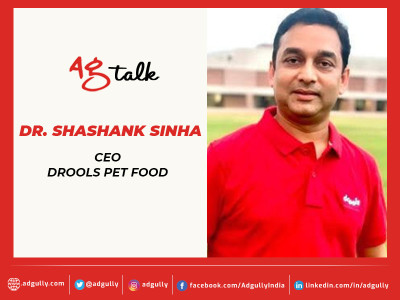
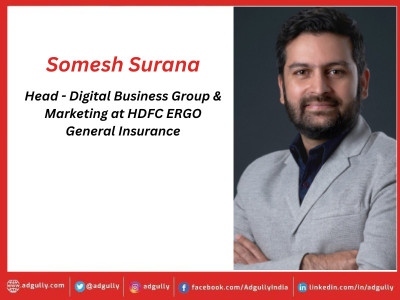

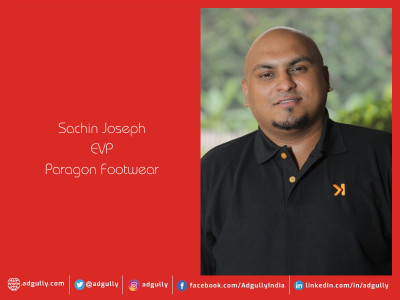

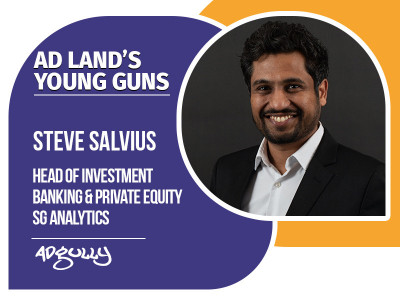
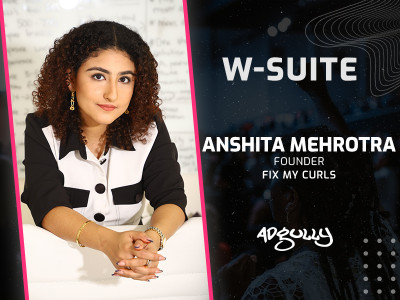




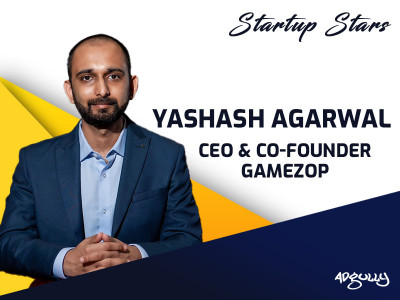

Share
Facebook
YouTube
Tweet
Twitter
LinkedIn